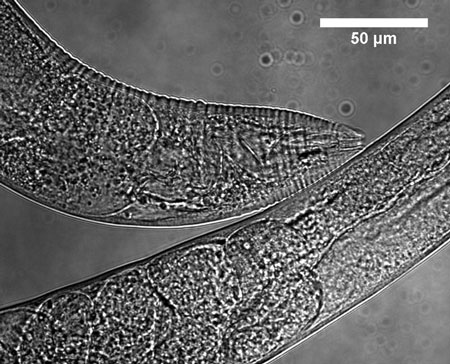| Sep 05, 2013 |
Touching research to advance haptics for human-machine interactions
|
|
(Nanowerk News) The National Physical Laboratory (NPL) is developing advanced microscopy techniques to support research into the sense of touch in order to help improve interactions between humans and machines.
|
|
Haptics is the study of sensing and manipulation through touch. Within the field of robotics, haptics is an enabling technology which is important for human-machine interactions. A better understanding of the human sense of touch can benefit many applications, from the design of intelligent prosthetics such as artificial limbs to the development of remote surgery and inspection using advanced telerobotics.
|
 |
| Two C. elegans specimens imaged using differential interference contrast.
|
| .
An ongoing project at UCL, funded by the European Research Council, and led by Prof Mandayam Srinivasan (the founder of the MIT Touch Lab) is investigating the biomechanics and neuroscience of touch by manipulating model organisms like the C. elegans nematode. The study of relatively simple model organisms can provide insights into the workings of other, more complex animals such as humans.
|
|
NPL will contribute to the project by developing optical microscopy systems for the real-time imaging of biological organisms. This will enable the measurement of the neuronal response and the development of mathematical models of mechanotransduction, to describe how cells convert mechanical stimuli into electrical and chemical signals in the nervous system.
|
|
This work will build on NPL's expertise in fluorescence microscopy, which includes super-resolution methods for imaging beyond the diffraction limit, adaptive optics and live imaging. The results of the project will improve understanding of the mechanism of touch over different length and force scales, which will find uses in healthcare, electronics and robotics.
|

